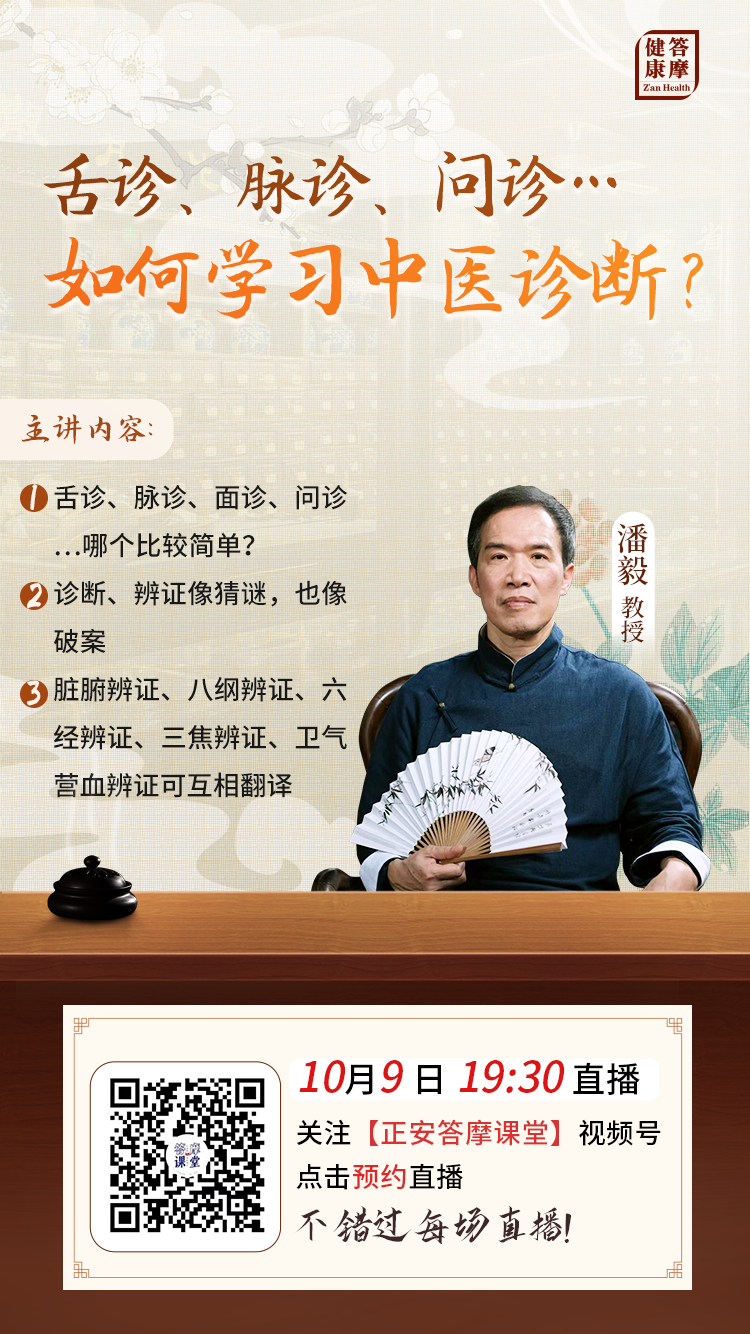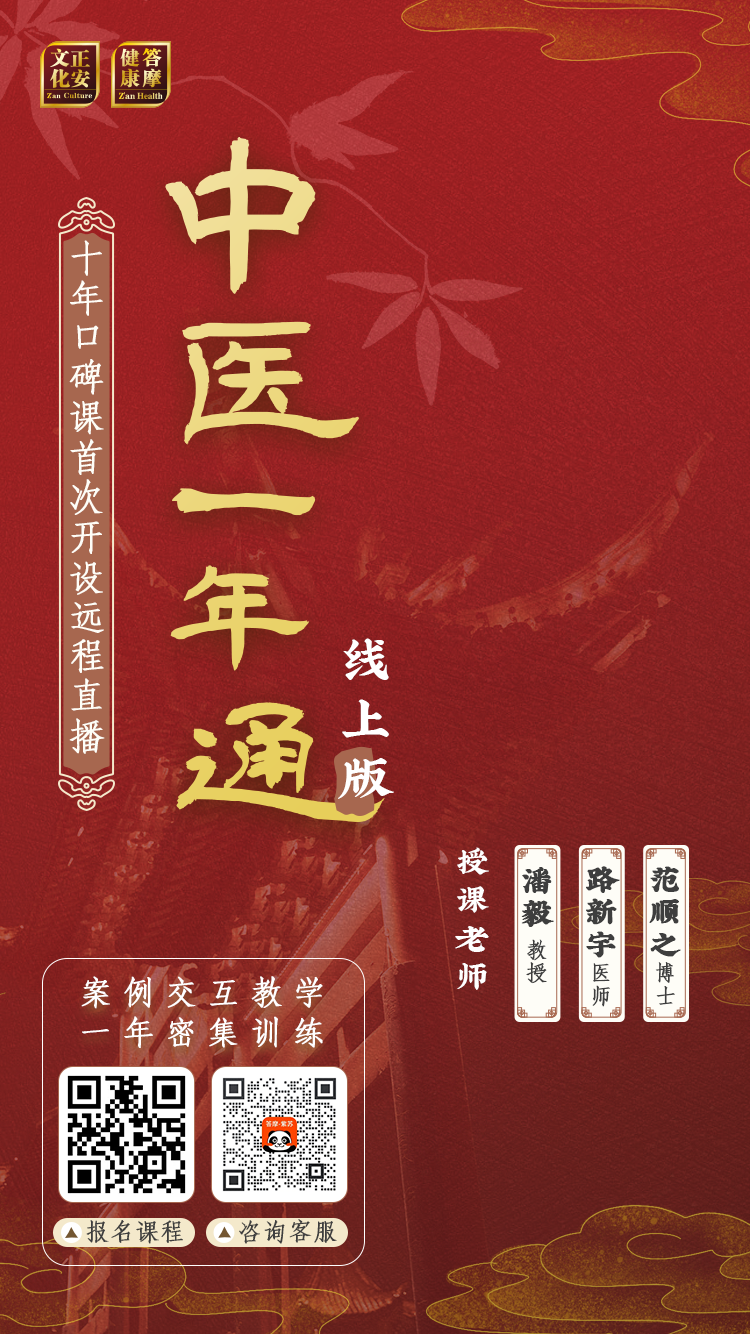This article guide
Qi deficiency and Yang deficiency are similar yet distinct; this article teaches you to accurately identify and nurture your health.
Qi deficiency, Yang deficiency, Yin deficiency, Blood deficiency, and Essence deficiency are types of deficiencies that may require differentiation and identification for beginners.
In the previous section on organ manifestations, we discussed corresponding deficiency syndromes, but did not summarize them, so here we will organize the learned deficiency syndromes for diagnostic differentiation.
First, let’s compare the difference between constitutional deviations and syndromes:
Generally speaking, constitution is not a pathological state; it is merely a physiological tendency in aspects such as Yin, Yang, Qi, Blood, and body fluids. Its formation process is relatively slow, with lighter deviations, representing a more stable state.
In contrast, the pathological state of a syndrome can form quickly or slowly, with greater deviations and more variability, referring to the current state when seeking medical attention.
Next, let’s identify the general sensations of Qi deficiency, Yang deficiency, Yin deficiency, Blood deficiency, and Essence deficiency.

Qi deficiency, Yang deficiency, Yin deficiency, Blood deficiency, Essence deficiency
Which type of deficiency is it?
First, Qi deficiency generally feels like: decreased physical ability, lack of energy, along with corresponding organ function decline, but it does not have a significant cold or heat deviation.
Yang deficiency feels: Yang deficiency leads to cold, essentially it is Qi deficiency plus cold manifestations.
Blood deficiency is characterized by a lack of color in the complexion during observation, a feeling of insufficient nutrition, and indistinct cold or heat attributes.
Yin deficiency, Yin deficiency leads to heat, generally feels like reduced moisture along with deficiency heat.
Essence deficiency is primarily manifested by delayed growth and development, reduced reproductive function, and premature aging in adults, with indistinct cold or heat attributes.
Now, let’s categorize the deficiencies one by one.
In TCM diagnosis, from a practical perspective, it is merely qualitative and locational; we will follow this thought process.
Today’s focus is on differentiating Qi deficiency and Yang deficiency.

Qi Deficiency Syndrome
Let’s first look at the qualitative manifestations of Qi deficiency:

Fatigue, shortness of breath, reluctance to speak, worsens with movement, pale or sallow complexion, pale tongue, weak pulse.

[Syndrome Analysis]
Decreased physical ability, lack of energy—fatigue, shortness of breath, reluctance to speak.
In TCM, excessive labor consumes Qi; excessive physical labor or exercise depletes Qi—worsens with movement.
Qi deficiency is unable to propel Blood to nourish the entire body—pale or sallow complexion, pale tongue, weak pulse.
Next, let’s look at the locational manifestations of different organs.
1. Heart Qi Deficiency Syndrome
On the basis of Qi deficiency, presents with palpitations, mental fatigue, chest tightness, spontaneous sweating.
[Locational Syndrome Analysis]
Heart Qi insufficiency, weak propulsion—palpitations;
Heart Qi deficiency, weak circulation, Qi stagnation in the chest—chest tightness;
Heart Qi insufficiency, insufficient stimulation of the spirit—mental fatigue;
Heart Qi deficiency syndrome is characterized by palpitations, mental fatigue, and symptoms of Qi deficiency.
2. Lung Qi Deficiency Syndrome
On the basis of Qi deficiency, presents with weak cough, shortness of breath and wheezing, low voice and reluctance to speak, clear and thin sputum, spontaneous sweating, aversion to wind, prone to colds, frequent runny nose.
[Locational Syndrome Analysis]
Lung Qi deficiency, weak diffusion and descent, Qi reverses upwards—weak cough, shortness of breath and wheezing;
Lung Qi deficiency, weak ability to produce sound—low voice and reluctance to speak;
Lung governs water; Lung deficiency leads to fluid not being distributed, accumulating as phlegm—clear and thin sputum;
Lung Qi cannot protect the exterior, pores are not secure—spontaneous sweating, prone to external pathogens leading to recurrent colds;
Lung Qi deficiency cannot retain the fluids it governs—frequent runny nose.
Lung Qi deficiency syndrome is characterized by weak cough and wheezing along with symptoms of Qi deficiency.
3. Spleen Qi Deficiency Syndrome
Spleen Qi deficiency syndrome can include several sub-syndromes.
(1) Spleen Qi insufficiency, dysfunction of transformation and transportation manifested symptoms
On the basis of Qi deficiency, presents with reduced appetite, abdominal distension, worse with overeating, loose stools, fatigue, weight loss, or obesity, or edema, sallow complexion.
[Locational Syndrome Analysis]
Spleen Qi deficiency, dysfunction of transformation and transportation—reduced appetite, abdominal distension;
Overeating burdens the Spleen Qi, which can also be said as excessive labor consumes Qi—abdominal distension worsens;
Spleen fails to transform and transport, clear and turbid not distinguished, water and dampness descend into the intestines—loose stools;
Spleen is the source of Qi and Blood production; Spleen deficiency leads to insufficient nourishment of limbs and muscles—fatigue, weight loss;
If Spleen Qi is weak, water and dampness are not transported, overflowing into the skin—weight gain or edema;
Qi and Blood cannot nourish the face—sallow complexion;
Spleen Qi deficiency syndrome is characterized by reduced appetite, abdominal distension, loose stools, and symptoms of Qi deficiency.
(2) Spleen Qi Sinking Syndrome
Refers to Spleen Qi weakness, inability to lift and secure manifested symptoms. Also known as Middle Qi Sinking Syndrome.
On the basis of Qi deficiency, presents with a heavy sensation in the abdomen, worsens with overeating, a feeling of heaviness in the anus, severe cases may lead to prolapse of the rectum, or prolapse of internal organs such as the stomach or kidneys, or uterine prolapse; may have frequent urge to defecate, or persistent diarrhea, or turbid urine like rice wash water.
[Locational Syndrome Analysis]
Spleen governs the lifting of clear; if Spleen Qi is weak, it cannot lift and secure the internal organs—heavy sensation in the abdomen, worsens with overeating, feeling of heaviness in the anus, severe cases may lead to prolapse of the rectum, or prolapse of internal organs such as the stomach or kidneys, or uterine prolapse;
Spleen deficiency cannot distribute the essence, clear Yang does not rise, head and eyes lack nourishment—hence dizziness and vertigo;
Spleen deficiency cannot distribute the essence, clear and turbid not distinguished, leading to frequent urge to defecate, or persistent diarrhea; turbid urine like rice wash water.
Spleen Qi sinking syndrome is characterized by prolapse of internal organs and symptoms of Qi deficiency.
(3) Spleen Not Controlling Blood Syndrome
Refers to Spleen Qi weakness, inability to control blood manifested symptoms.
On the basis of Qi deficiency, presents with blood in stool, vomiting blood, blood in urine, nosebleeds, subcutaneous purpura, or excessive menstruation in women, or metrorrhagia.
[Locational Syndrome Analysis]
Spleen Qi deficiency cannot control blood, leading to blood overflowing outside the vessels—various types of bleeding as mentioned above.
Spleen Not Controlling Blood syndrome is characterized by various chronic bleeding and symptoms of Qi deficiency.
4. Kidney Qi Deficiency Syndrome
Kidney Qi deficiency can have two sub-syndromes.
(1) Kidney Qi Not Firm Syndrome
Refers to Kidney Qi deficiency, inability to secure and contain manifested symptoms.
On the basis of Qi deficiency, presents with frequent clear urination, residual urine after urination, enuresis, frequent night urination, urinary incontinence, or men’s premature ejaculation, or women’s prolonged menstruation, or excessive clear discharge, or unstable pregnancy leading to miscarriage, soreness and weakness in the lower back and knees.
[Locational Syndrome Analysis]
Kidney Qi cannot secure and contain, bladder loses control—frequent clear urination, residual urine after urination, enuresis, frequent night urination, urinary incontinence;
Kidney Qi fails to secure, seminal fluid leaks—premature ejaculation;
Kidney is the root of the Chong and Ren vessels; Kidney Qi deficiency leads to instability of these vessels—prolonged menstruation;
Kidney Qi deficiency leads to instability of the Dai vessel—excessive clear discharge;
Kidney Qi deficiency leads to instability of the fetus—unstable pregnancy, miscarriage.
The lower back is the residence of the Kidney; Kidney Qi deficiency leads to lack of nourishment in the lower back and knees—soreness and weakness in the lower back and knees.
Kidney Qi Not Firm syndrome is characterized by urinary, seminal, menstrual, and pregnancy instability along with symptoms of Qi deficiency.
(2) Kidney Not Containing Qi Syndrome
Refers to Kidney Qi deficiency, inability to contain Qi manifested symptoms.
On the basis of Qi deficiency, presents with weak cough, shortness of breath, shallow breathing, worsens with movement.
[Locational Syndrome Analysis]
Kidney is the root of Qi, governs the containment of Qi; Kidney Qi deficiency leads to inability to contain Qi—weak cough, shortness of breath;
Qi does not return to the source—shallow breathing;
Movement consumes Qi—symptoms worsen with activity.
Kidney Not Containing Qi syndrome is characterized by weak cough, shallow breathing, worsens with movement along with symptoms of Qi deficiency.
5. Stomach Qi Deficiency Syndrome
Refers to Stomach Qi deficiency, inability to harmonize and descend manifested symptoms.
On the basis of Qi deficiency, presents with dull pain or distension in the stomach area, feels better when pressed, lack of appetite, overeating leads to worse distension, belching, hiccups, vomiting.
[Locational Syndrome Analysis]
Stomach Qi deficiency, reduced ability to receive and digest food—dull pain or distension in the stomach area, lack of appetite;
Pathological nature is deficiency—feels better when pressed;
Stomach Qi is already weak, overeating leads to difficulty in digestion—overeating leads to worse distension;
Stomach Qi deficiency, inability to harmonize and descend, leads to reverse flow—belching, hiccups, vomiting;
Stomach Qi deficiency syndrome is characterized by distension and dull pain in the stomach area, lack of appetite, and symptoms of Qi deficiency.

Yang Deficiency Syndrome
Yang deficiency leads to cold, so its characteristic is deficiency and cold; let’s first look at the qualitative manifestations of Yang deficiency:

Qi deficiency + cold signs + weak and slow pulse.

[Syndrome Analysis]
Previously, we discussed that Qi deficiency is a functional decline, while Yang deficiency is a functional decline with cold signs. Cold manifestations often include cold limbs or local cold sensations, preferring warmth and pressure.
In pulse diagnosis, a slow pulse indicates cold, and weak pulse indicates deficiency; Yang deficiency is a deficiency-cold syndrome.
How to differentiate Yang deficiency in various organs? Essentially, the symptoms of Qi deficiency in each organ can also be present in Yang deficiency, so we will not repeat them here. Additionally, due to the presence of cold signs, some symptoms may worsen or present differently.
For example, Heart Yang deficiency, compared to Heart Qi deficiency, in addition to the cold signs of cold limbs, may also present with chest tightness and pain. Because Yang deficiency leads to cold, cold nature stagnates, causing Qi and Blood to be less free-flowing, leading to pain.
Kidney Yang deficiency, compared to Kidney Qi deficiency, may also present with reduced libido, male impotence, premature ejaculation, cold seminal fluid, and female infertility due to cold in the uterus.
For example, Spleen Yang deficiency may present with diarrhea, especially with undigested food in the stool.
What does undigested food mean? It means that when stool is passed, food particles can still be seen, indicating that what was eaten is what is excreted. This is similar to cooking rice; if water and rice are placed in a pot without heat at the bottom, the water remains water, and the rice remains rice. Due to the lack of heat at the bottom of the pot, this group of symptoms can sometimes be classified as Spleen and Kidney Yang deficiency.
Additionally, the cold sensation of Spleen Yang deficiency often appears in the abdomen, preferring warmth and pressure.
The cold sensation of Kidney Yang deficiency often presents as soreness and cold in the lower back and knees.
Stomach Yang deficiency may present with cold sensations in the stomach area, preferring warmth and pressure, or an inability to tolerate cold and raw foods.
However, it is important to note: can we understand that Qi deficiency, when severe, will turn into Yang deficiency? This cannot be understood so simply!
Some individuals with severe Qi deficiency symptoms do not exhibit cold signs; upon diagnosis, they are still classified as Qi deficiency;
Others may have obvious cold manifestations throughout the body or locally, but the functional decline may not be very apparent; in this case, the diagnosis would still be Yang deficiency.
Long press the poster to scan the code
Book a live session to watch for free

Learn authentic TCM from home with renowned teachers
▽


Copyright Statement:
1. This article is prohibited from being reproduced in any form without authorization.
2. The comment section at the end of the article is open for discussion. This platform supports comments, and selected comments do not represent the position of this platform.
Today’s Editor | Bing Bing

▼ ClickRead the original text to register for “One Year of TCM” in Diagnosis

